Top 25 autonomous shuttle manufacturers
Autonomous vehicles have become an unsettling reality. Unsettling for some who can’t get used to the idea of cars driving themselves – too spooky, like ghosts living and driving among us.
While those feelings of apprehension may prevent driverless cars taking to public roads for many years, manufacturers of autonomous shuttles are already doing a brisk trade.
Airports, for example, have been among the most enthusiastic customers for driverless shuttles that can transport passengers between the terminal and plane. In the past, airports provided driverless transport available on rails, which obviously requires greater investment in infrastructure.
Autonomous shuttles tend to operate on the grounds of its owner – an airport, industrial estate, golf course, a trade show that covers a large area, such as Hannover Messe or IMTS, and so on – and have no need to take to public roads. This means there are fewer regulations to navigate.
Having said that, many national governments and local authorities around the world have accelerated their initiatives to provide conducive regulatory environments for driverless transport to flourish – not just for testing, but for full operation as well.
One of the main reasons for this is that the opportunity to provide transport to remote areas at a lower cost is something that local and national governments cannot ignore.
Autonomous shuttles could connect people living in distant or outlying areas to the centre of town at a fraction of the cost of human-driven minibuses. Indeed, if driverless mobility systems became widespread, the amount of money saved by the operators – who are usually local authorities – could change the whole way areas are governed.
So, with that as background, Robotics and Automation News is publishing this list to highlight the most active and most successful autonomous transportation technology developers.
We’ve concentrated on the autonomous shuttles sector and given prominence to startups in that sector, rather than, say, driverless trucks being tested by the large, long-established automotive giants.
Autonomous trucks is a fascinating sector on its own, so we will probably make a list of those in due course, but most of them are in the testing phase right now, and we try to prioritise market-ready technologies.
We give a similar reason with respect to driverless cars intended for public roads – we haven’t ignored them completely, but for this article, we’re more interested in autonomous shuttles, preferably ones which transport people, but also ones which carry goods.
So, here’s the list, in no particular order.
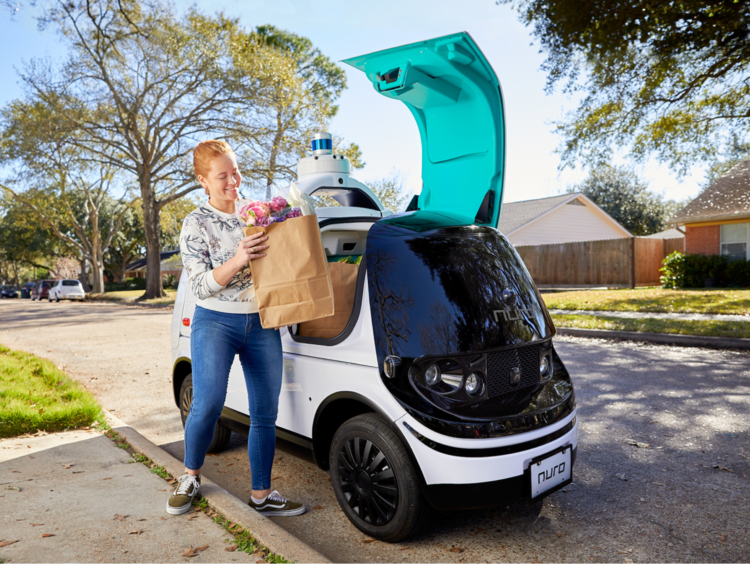
1. Nuro
San Francisco-based Nuro has been very busy lately, even amid the interminable and nightmarish coronavirus lockdown. Indeed, the company has been making its autonomous goods delivery vehicle available to fight against the evilcorp virus, delivering medicines and so on for the CVS Pharmacy chain and a number of hospitals and medical centres.
But even before the world started resembling a dystopian science fiction film, Nuro had signed up grocery chain Kroger and Domino’s pizza as customers. The startup has so far raised $1 billion, according to Crunchbase, and has more than 250 employees.
Nuro is said to be the first company to have received an “autonomous exemption” from the National Highway Traffic Safety Administration because its vehicles carry goods, not humans.
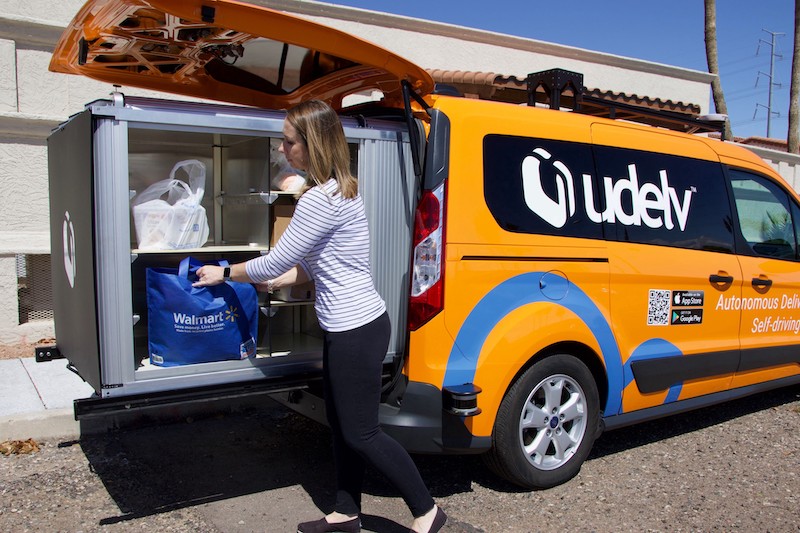
2. Udelv
Walmart, the world’s largest grocery chain, is already a customer of Udelv, which also provides its goods delivery van to Baidu, China’s equivalent of Google. The startup describes these as “major contracts”.
Another San Francisco-based company, Udelv appears to be a fraction of the size of Nuro, with up to 50 employees, and funds of $1.35 million raised so far, according to Topio Networks. However, with partners like Walmart and Baidu, it’s unlikely to remain small for very long.
Udelv’s autonomous delivery vehicles, or “ADVs” as the company calls them, can carry 800 lbs of payload and gather operational data that enables continuous streamlining of logistics routes.
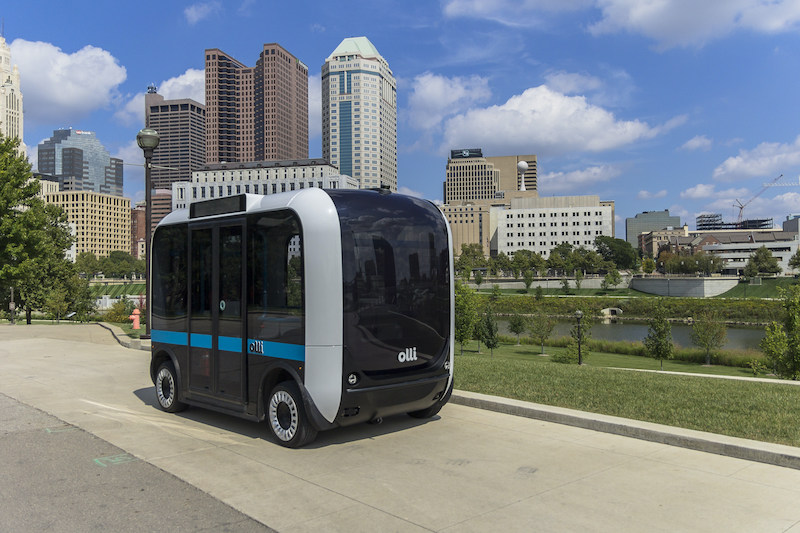
3. Local Motors
Unlike the above two, Local Motors’ autonomous shuttle – called “Olli” – is designed to carry human passengers. The company partnered with computing colossus IBM in the development of its 12-seater driverless shuttle. IBM integrated its artificial intelligence Watson into the vehicle.
Another notable partnership Local Motors secured was with the organisers of the International Manufacturing Technology Show, the biennial event that takes place on a large ground space in Chicago. Visitors to the last show were treated to free rides on Olli.
Local Motors is another US company, but unlike the above two, its fundraising so far has been comparatively modest, at around $250,000 to date, according to Crunchbase.
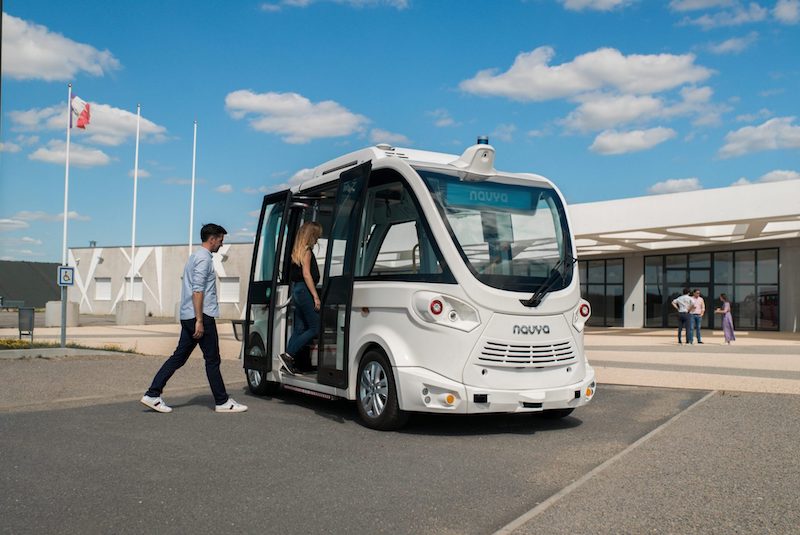
4. Navya
One of the most talked-about providers of people-carrying autonomous shuttles, Navya is a French company whose “Autonom” vehicle is at or near the top of the list for many local authorities and organisations when they consider new mobility options for residents in remote areas.
The startup has sold many units across the world, including one to Masdar City, a picture-perfect ultra-modern, hi-tech and eco-conscious town being built in Sharjah, a tiny emirate in the United Arab Emirates; as well as one to the Henry Ford foundation.
Total funding raised by Navya so far amounts to almost $65 million, according to Crunchbase, and the company generated revenues of €4.7 million in the first six months of 2020, down 23 per cent compared to the first half of 2019. Coronavirus blah blah.
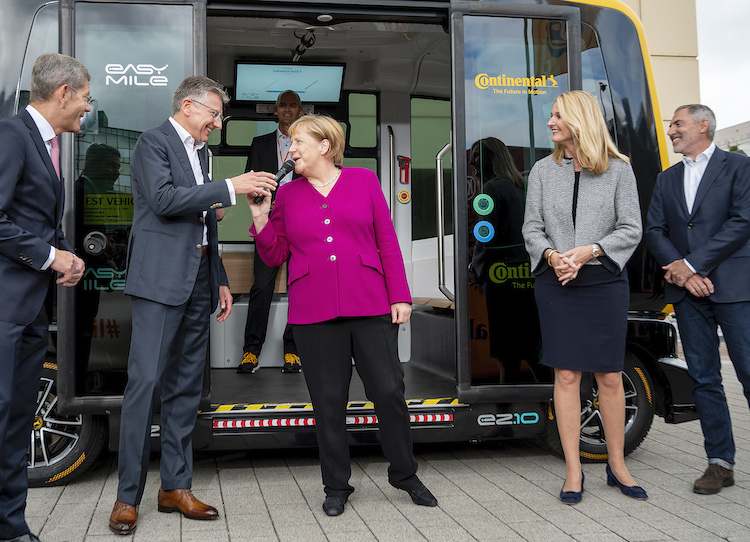
5. EasyMile
Another French company, EasyMile is an autonomous shuttle maker that has found success for its people-carrying vehicle. With funding so far totalling more than €22 million, EasyMile has some very powerful backers.
Continental, one of the world’s largest automotive systems suppliers, most famous for tyres, has been a shareholder in EasyMile for some time, and the two companies partnered to develop autonomous vehicles in which German leader Angela Merkel has taken a ride.
EasyMile has quickly moved on in terms of technology, recently launching an autonomous tow tractor, which it developed and built in partnership with Groupe PSA. And although we’re trying to concentrate on people-moving autonomous vehicles in the article, it’s worth mentioning Outrider’s autonomous vehicle for yard operations, since we’re talking about EasyMile’s tow tractor.
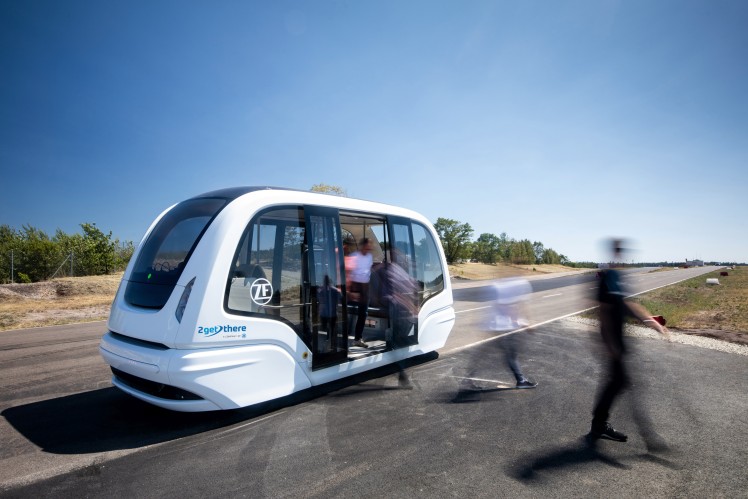
6. 2GetThere
Another European company – although this one from the Netherlands, 2GetThere specialises in autonomous “people movers”, as the company calls them. It’s also developing shared autonomous vehicles, but driverless cars will take a while before taking to the roads in large numbers, as noted above.
The people behind 2GetThere – which has now been acquired by automotive components behemoth ZF – say their systems are based on more than 30 years of experience with automated vehicles in a variety of environments. For example, automated guided vehicles in factories and warehouses.
AGVs – for new readers – tend to be limited in the movement by the magnetic tracks that they stay on and are not very computerised or sensorised. The word autonomous refers to vehicles that can move freely in different directions without a need for tracks, using their mapping and navigation systems and collision avoidance sensors to get wherever they want to go.
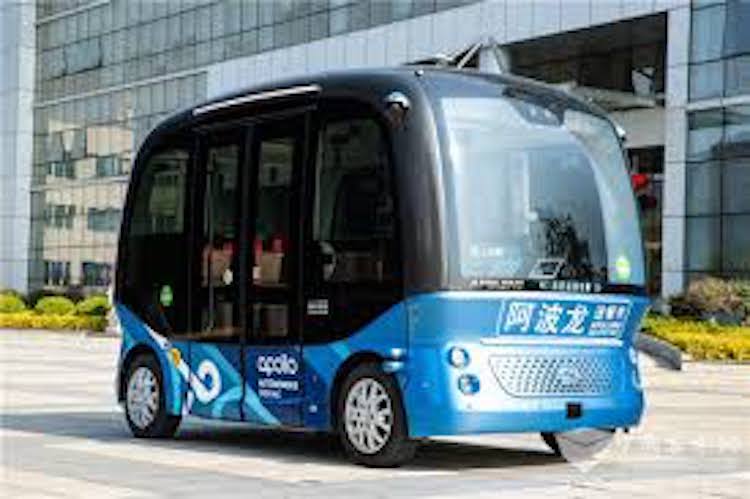
7. Baidu
The Chinese tech giant Baidu was founded in 2000 and specializes in internet-related services and products, and AI. The company started the development of autonomous vehicles in 2013.
Baidu recently launched a driverless taxi service in Beijing, and has negotiated 50 partners to sign up for the development and purchase of the new autonomous buses Apolong.
The volume production of the autonomous minibus Apolong is in partnership with Chinese vehicle manufacturer King Long, which designs and manufactures the vehicle. In July 2018, Baidu announced its 100th Apolong, marking its ability to commercialise its autonomous shuttle buses.
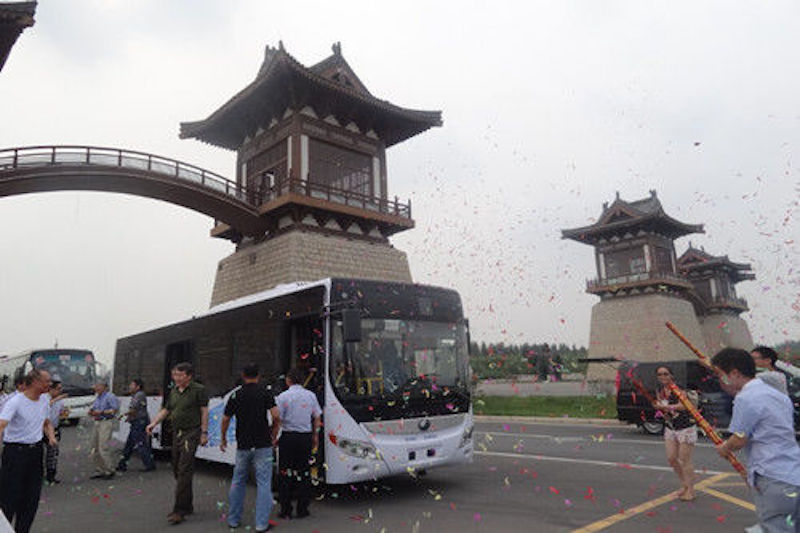
8. Yutong
We don’t know an awful lot about this company, but we’ve found that it’s a Chinese manufacturer of commercial vehicles such as buses. Driverless shuttles are a negligible part of the business in a monetary sense, but the company clearly believes that’s where the future is.
Yutong recently completed what it described as “the world’s first trial operation of unmanned bus” on public roads in China, developing its own computing and sensing systems in the process.
The company says its driverless bus, which is about two or three times the size of a typical autonomous shuttle, will still go through another three development stages, namely basic movement control, driving on average road conditions, and driving on “race lanes”, whatever they are.
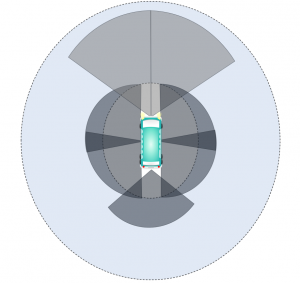
9. LeddarTech
We probably should restrict this list to only companies that build complete vehicles rather than components, which is what LeddarTech does – it makes sensing solutions such as light detection and ranging sensors, a key technology that enables vehicles to “see” what’s around them at any given time.
There are numerous other providers of sensors for autonomous vehicles, such as Velodyne, SICK and so on, but LeddarTech probably merits highlighting because it specifically targets the autonomous shuttle market.
The company says it has developed its own sensing system which eliminates “dead zones” – similar to blind spots from a human driver’s point of view.
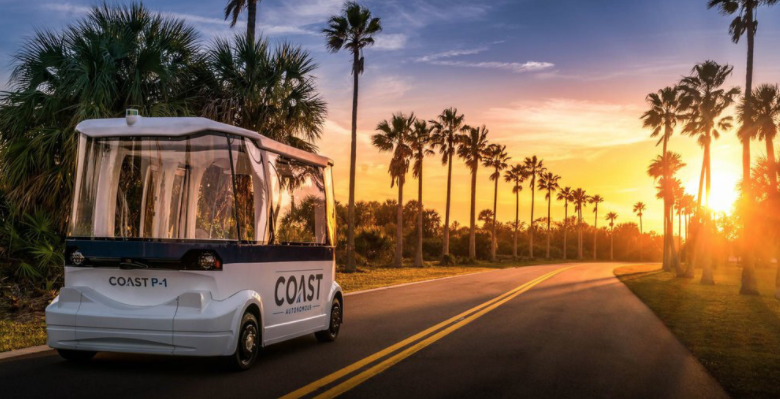
10. Coast Autonomous
Coast Autonomous claims it has developed “a proprietary 6-Level autonomous vehicle system” that includes mapping and localization, robotics and artificial intelligence, fleet management and supervision.
Given that most automakers go by the SAE’s 0 to 5 levels of automation, we’re not exactly sure what this means. But whatever the details, Coast appears to have an attractive-looking driverless shuttle which looks splendid against the sunset, as shown in the picture above.
As well as offering its own vehicle, Coast Autonomous provides software as a service, which means other automakers can install the software into their vehicles to make them driverless.
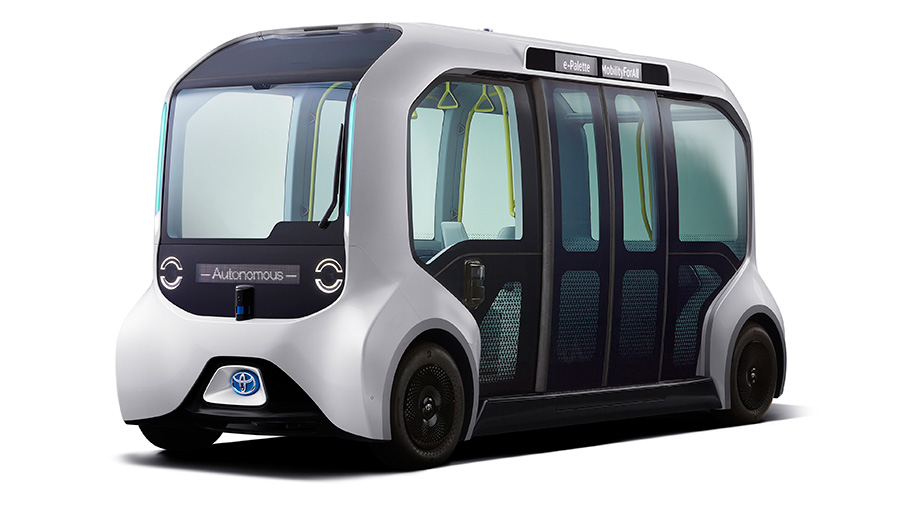
11. Toyota
Along with hundreds of millions of people around the world, Toyota was beside itself with excitement about the Olympics, which were supposed to take place earlier this year, but were cancelled because of coronavirus.
The company thought it would get to show off the multitude of new technologies it had developed especially for the Games. One of them was its autonomous shuttle, called “e-Palette”.
Toyota was planning to build 20 specially-designed “Tokyo 2020” versions of the e-Palette but will now have to rename them 2021 at least and find new places and customers to provide driverless rides to.
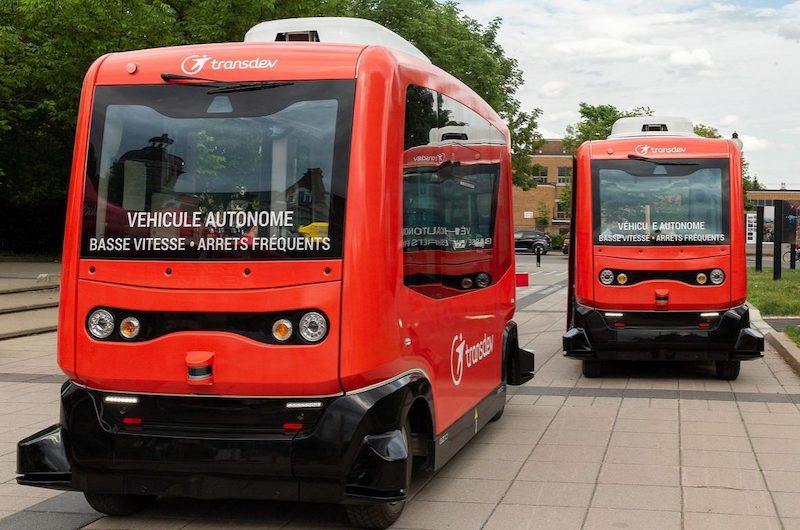
12. Transdev
Transdev is a huge European transportation operator, with more than 80,000 employees and around $7 billion in annual revenues. It has partnered with autonomous shuttle maker e.Go on the Moove vehicle, as well as EasyMile.
Being a transport operator, it will inevitably look to specialist builders of vehicles for its supply of autonomous shuttles, but the company is investing heavily in developing the technologies needed for an autonomous mobility network and could easily get into building its own driverless electric minibuses.
Moreover, it’s been involved in this business for a relatively long time, having signed its first international agreement to introduce a fleet of autonomous shuttles to Rotterdam’s Rivium business district.
We could probably mention a large number of transport operators who are looking into autonomous transport systems, but we’ll just use Transdev as a representative of the rest.
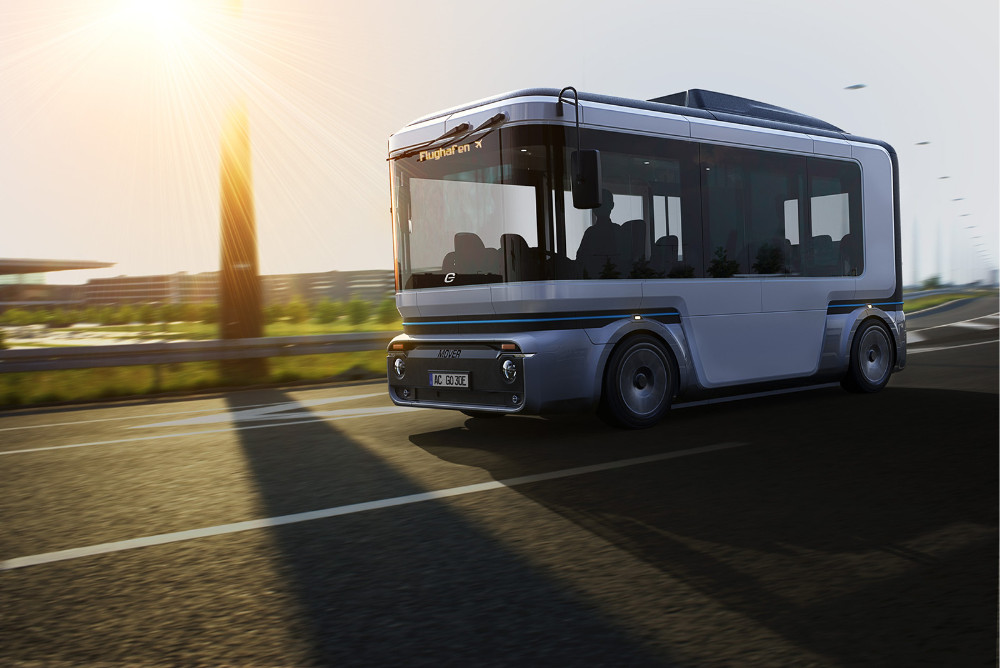
13. e.Go
This startup has struck up partnerships with German automotive components giants ZF and Bosch, so it’s ideally set up for success. Series production has started and it’s likely that we will start seeing its intriguing little people mover popping up here and there.
As well as the autonomous people-carrier, e.Go has produced a cargo transporter as well. Both vehicles are electric and the main design difference is that the cargo mover doesn’t have many windows – just the one at the front in case a human needs to take control.
The company describes the vehicle as a “platform”, indicating that it is a modular system which can be scaled up or down to different sizes. Separately, the company has revealed that four of its e.Go Life small cars are now being used by the police in Aachen, a city in western Germany.
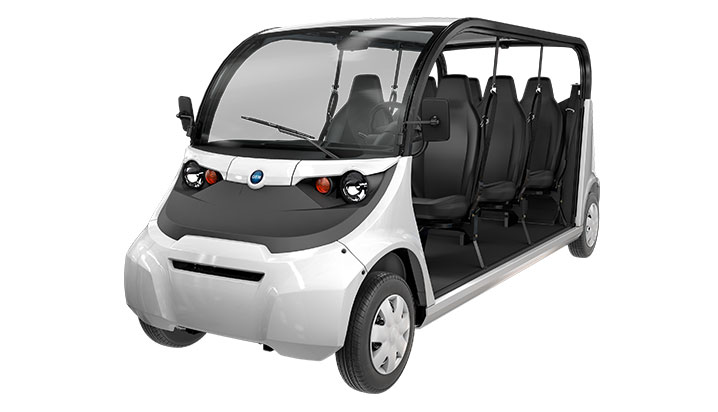
14. Polaris
This American company has quietly made great strides into its chosen markets with its small autonomous vehicle, which looks a bit like the MIT vehicle mentioned below. Smaller than most of the others on this list, the Polaris Gem people-carrier can transport four passengers, and can be adapted to carry cargo.
Strictly speaking, the Polaris Gem is not an autonomous vehicle right now – just electric. However, it has been selcted by Perrone Robotics for adaptation as an autonomous vehicle – meaning Perrone will make it autonomous by integrating its software into it. It will also increase the size of the vehicle to carry more passengers and goods.
And this is one of the other categories we have largely omitted from this list – software companies. This is because, in theory, any software company can turn any vehicle into an autonomous one, and anyway, as mentioned, we are mainly concentrating on ready-made autonomous shuttles for now.
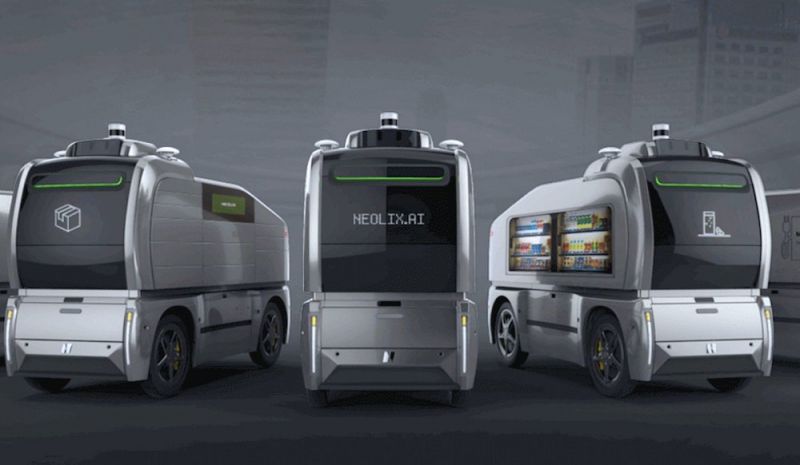
15. Neolix
This startup from China is enjoying huge success in its country of origin, where rules and regulations are generally more liberal, which is ironic given its communist background.
Neolix’s small autonomous shuttle started out as a goods-carrying street vehicle, which it mainly still is. But more recently, the company has taken aim at the industrial production market – factories, where it is used to carry tools, components and other items around the facility.
The company has in the past year or two moved into Europe and is extensively testing its vehicle in countries such as Switzerland, and hopes to launch it to market next year. Additionally, it is likely to build an autonomous people-carrier based on the same platform.
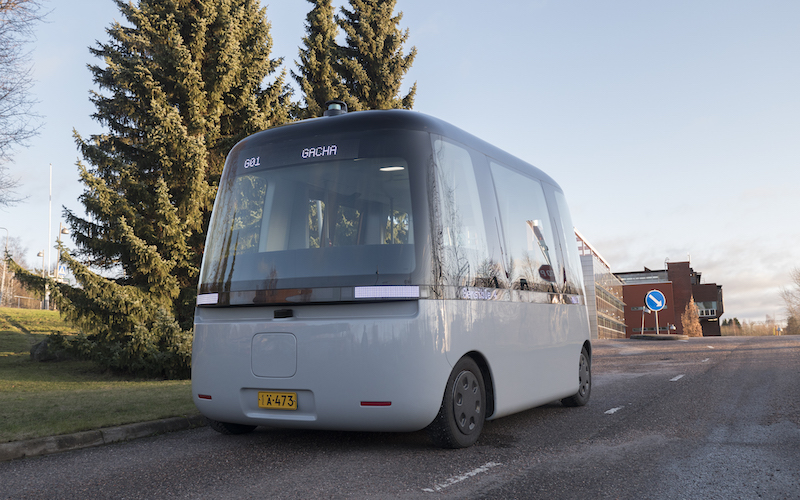
16. SoftBank
SoftBank is an interesting company on many levels. Its name has the word “bank” in it, but it’s not actually a bank. It made the main bulk of its money in telecommunications, and in recent years it’s become intensely interested in robotics for some reason.
And whatever it does, SoftBank seems to be hugely successful at it – from its humanoid robots which generate tens of millions of dollars in revenue, to its floor cleaning robots, which are also market-leading money-earners.
Recently, it’s taken to the autonomous vehicle market with similar aplomb, unveiling its SB Drive autonomous shuttle, which is actually Navya’s vehicle modified and rebranded. No matter. SoftBank has been on the acquisition trail in the past few years – buying up Nao Robotics and chipmaker ARM, so it’s not beyond the realm of possibility that it would buy Navya as well.
And Navya is not the only company SoftBank is partnering with. The picture above shows a different version of the SB Drive which was built in collaboration with Finnish startup Sensible 4 (see below).
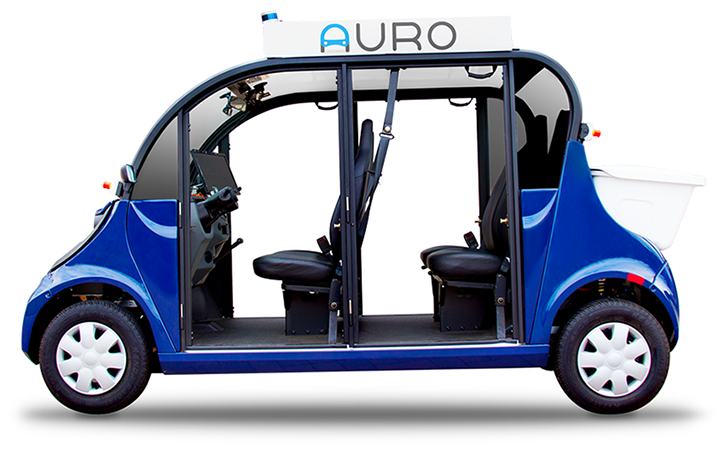
17. Auro
Primarily a software company that has developed an autonomous vehicle platform, Auro Robotics was acquired by Ridecell, a ride-sharing app startup. Now, the combined business has demonstrated numerous autonomous vehicle technologies, including a driverless shuttle.
Auro has been partnering with numerous vehicle developers and producing a variety of designs, mainly aimed at transporting people – autonomous shuttles that drive people around within campuses, theme parks, resorts, business parks, and retirement communities.
Auro-enabled shuttles were among the first driverless shuttles put into daily operation on the Santa Clara University campus in California.
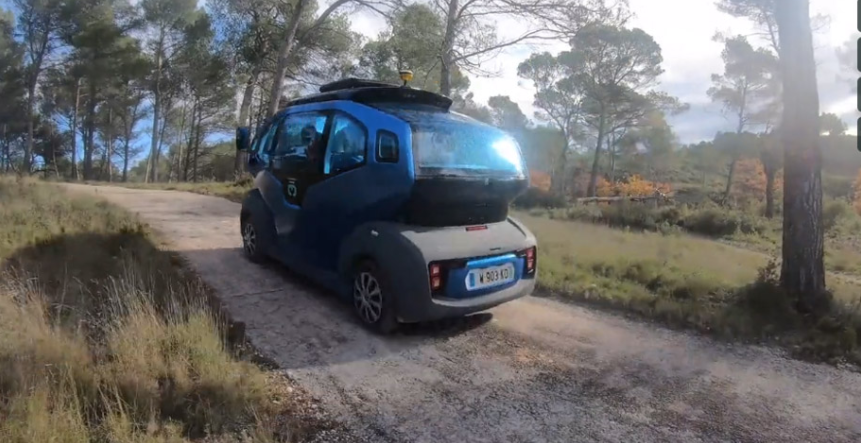
18. Milla Pod
Another French company like Navya and EasyMile but probably not as well known, Milla Pod is nonetheless ready with a pretty snazzy-looking small autonomous shuttle, which carries four people quite comfortably.
Primarily a shuttle manufacturer, Milla appears to be an independent company set up by two people with decades of experience in the automotive industry, and specifically in the autonomous vehicle sector.
Commercialisation is probably a little behind its competitors but it’s very early days in the sector and different companies are going for different sectors, attempting to carve out their own niches, which means there may be space for most or all of them. Milla seems to be interested in off-road, rural-type routes, claiming to be “the first autonomous mobility operator to be able to manage off-road areas in autonomous mode”.
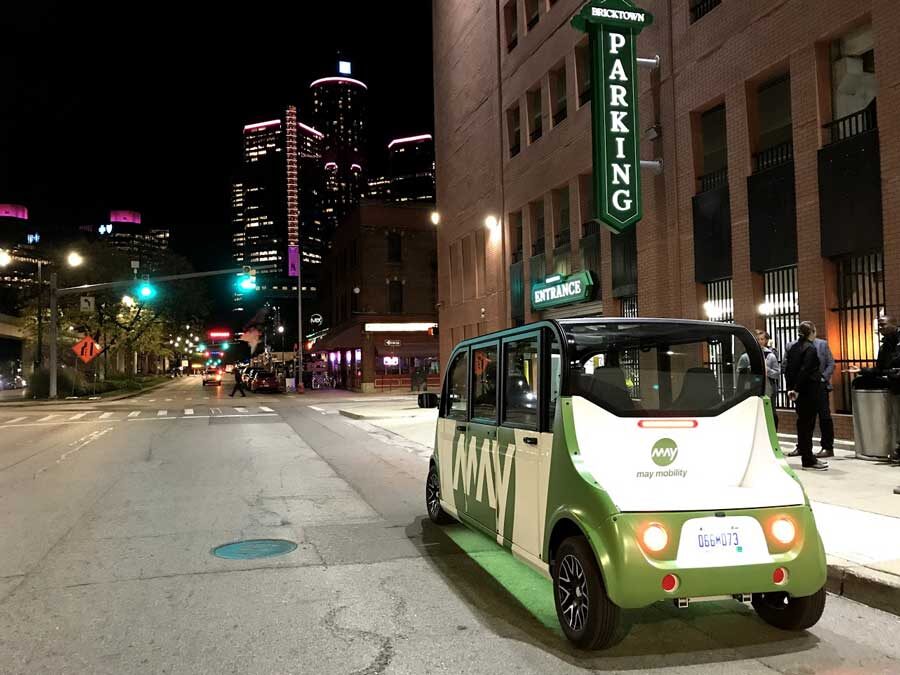
19. May Mobility
This University of Michigan startup has attracted tens of millions of dollars of investment funds from the like of Toyota and BMW, so it’s very well-placed to compete in the autonomous shuttle market.
The company is currently focused on the US first-mile-last-mile transportation market, specifically in urban areas. These service routes are in high-density areas helping both riders and cities solve for gridlock, wait times, accessibility and availability problems.
May Mobility’s current fleet of electric vehicles have already provided more than 170,000 revenue-generating rides with an enterprise service working with both public and private customers in Detroit, and Grand Rapids, in Michigan, and Providence, Rhode Island.
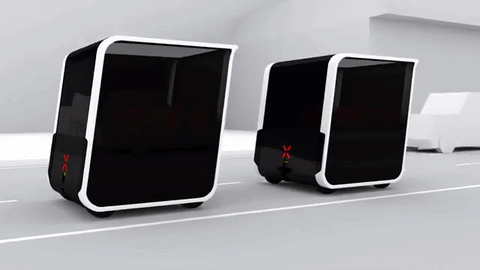
20. Next
Next Future Mobility has designed, and is developing, what in our view is not only the most unconventional-looking vehicle but also the most technically challenging autonomous shuttle system. It appears to follow the principles of trains, with carriages that can be added or taken away from the main module, as can be seen in the animated image above.
Obviously it is a modular system which can be scaled up or down according to needs, but so far the design is largely still on the digital drawing board. The company is inviting pre-orders and has unveiled a working prototype which is designed to carry people but can be modified to transport goods.
The company, headquartered in San Jose, California and backed by investors in the oil-rich United Arab Emirates, expects most of its customers to come from the public sector – short routes such as airport operations or remote bus rides.
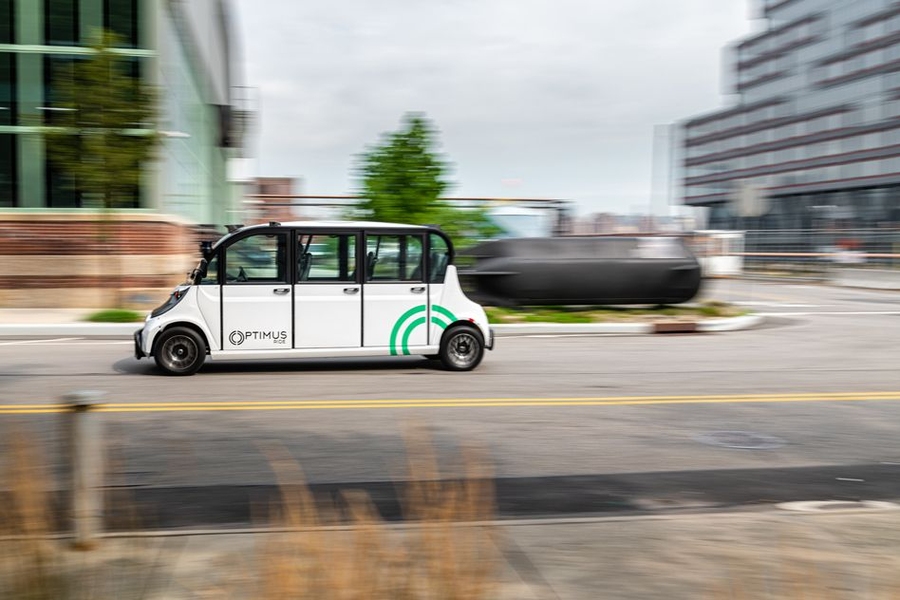
21. Optimus Ride
This MIT startup has produced an autonomous shuttle design which at once looks modern and traditional, fitting in with an urban landscapes and the other vehicles around them, largely due to its unusual shape and its traditional-looking doors.
Optimus Ride has already deployed its autonomous transportation systems in the Seaport area of Boston, in a mixed-use development in South Weymouth, Massachusetts, and in the Brooklyn Navy Yard, a 300-acre industrial park.
Additionally, through a partnership with Brookfield Properties, which owns over 100 locations where Optimus Ride could implement its system, the company is aiming to be operating 10 or more fleets by the end of 2020.
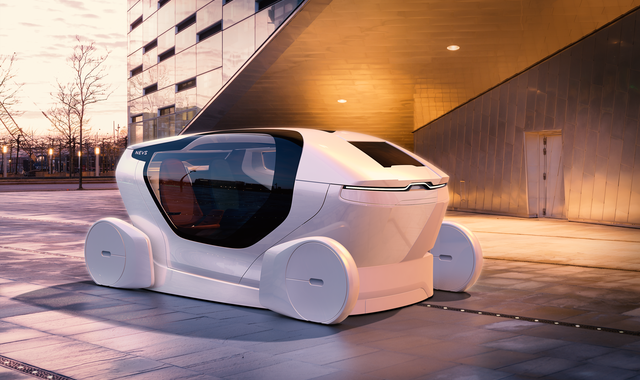
22. National Electric Vehicles Sweden
NEVS is basically what remains of the formerly famous Swedish automaker Saab, and it has designed an autonomous shuttle that is probably the most futuristic-looking on this list, as shown above.
The startup’s InMotion autonomous concept vehicle can be configured for a variety of applications, from people-carrying for leisure or commuting, to goods transportation.
Among the InMotion’s features is one which uses the glass windows as display screens which can present contextual information, control of infotainment and augmented interaction.
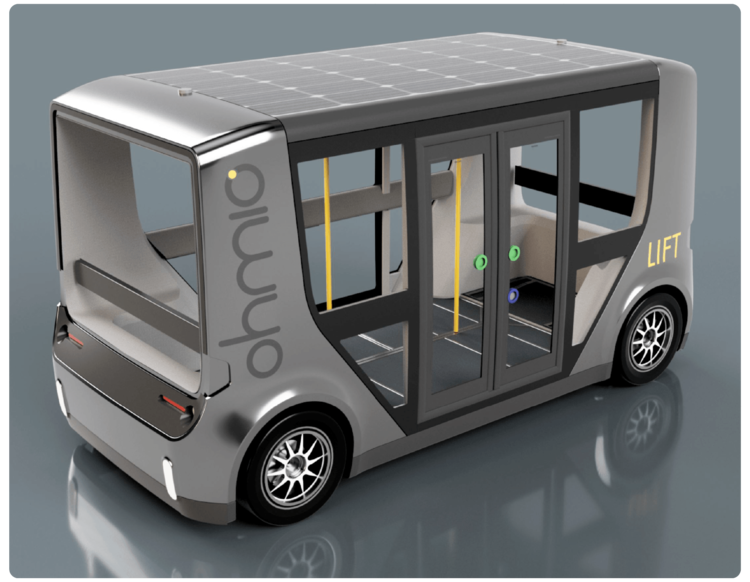
23. Ohmio
This New Zealand company has been very busy, building three different versions of its autonomous shuttle, all of which are electric, like all of the others in this list.
The main one is decked out inside as a six-seater people-carrier, while another version can carry up to 20 if they all stand, and yet another combines two of the vehicles to enable transportation of up to 40 people.
One of the key features of the Ohmio guidance system is the ease with which routes can be implemented and changed, allowing for more flexible and remote deployment of the vehicle, says the company.
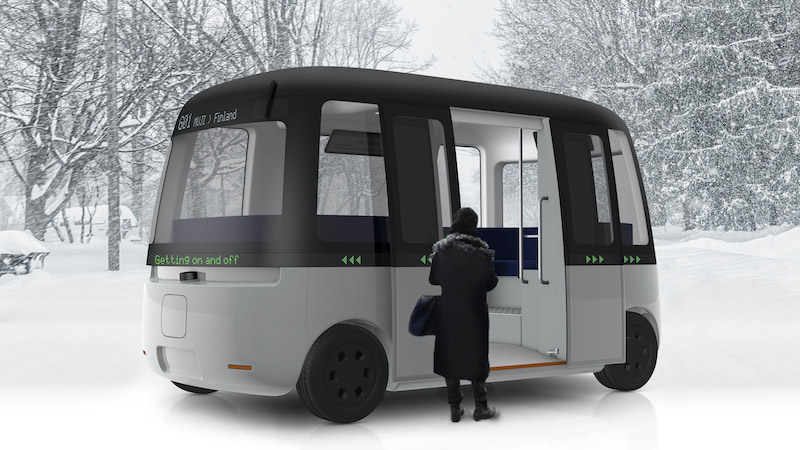
24. Sensible4
One of the few companies located in the old Eastern Bloc, this Finland-based company has a partnership in place with global automaker Toyota, and has developed special sensors which can remain operational in the harsh Finnish winters, when temperatures regularly dip to around minus 40 degrees Celsius.
Sensible4’s autonomous shuttle is called Gacha and has so far been operated under direct supervision of a human driver. However, the company says it has successfully completed tests in difficult weather conditions, including snow, wind, and heavy rain.
Dreamed up by Japanese design house Muji, the Gacha vehicle is connected to a fleet management network and an app through which passengers can book rides and monitor the vehicle’s location, similar to other autonomous shuttle services on this list.
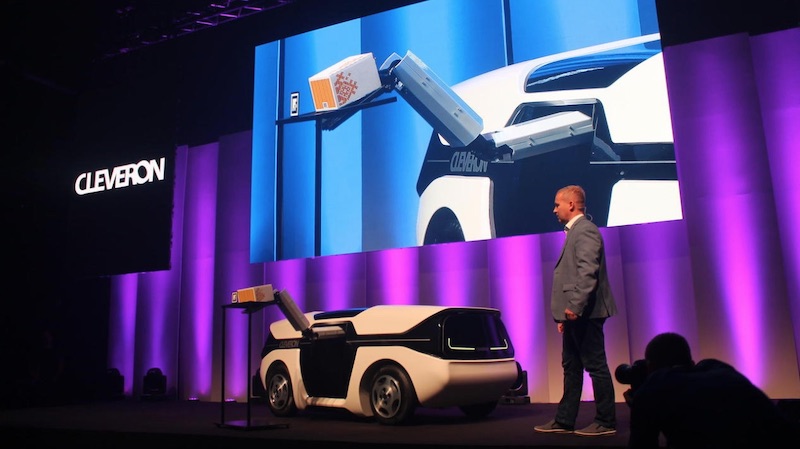
25. Cleveron
Another company located in a formerly Soviet Union communist state, Estonia-headquartered Cleveron has been producing a variety of technologies such as automated shops and driverless shuttles, starting with a goods-carrying vehicle.
The nifty-looking “robot courier”, as Cleveron calls it, also sports a robotic arm which extends from within the vehicle to bring out the parcels or items for the recipient.
Although Cleveron appears not to have specific plans to develop a people-carrying autonomous shuttle, it’s probably not too much of a stretch to think that they will do so at some point in the future, especially given the lack of competition in the region, unlike, say, in the US or even in France.
The problem with listicles
That’s it. That’s the list as we have it. We could have added a few more companies, but 25 is probably enough for now. It’s still a new market and most of the companies are at the very early stages of commercialisation. It would certainly be interesting to make another list in a year or so, to see how these companies are doing.
It’s unlikely that any – or at least too many – will fail. The market seems large enough to sustain all of them, provided each one can cater to its own niche and offer unique selling points relevant to those niches.
We could have included more companies and types of autonomous vehicles, such as the giant driverless haulage trucks used in mining – the companies leading in that sector include Komatsu and Caterpillar.
And of course the traditional automakers are all developing autonomous, or highly-automated, technologies, although we have only mentioned Mercedes.
But we wanted to concentrate on autonomous shuttles specifically because we guesstimate that the market for low-speed autonomous and electric vehicles which carry people and goods is potentially huge and there is a lot of interest in them, from all perspectives – the technology developers, the potential buyers and the would-be passengers and customers.
We probably could have or should have included Bosch, which showcased its autonomous vehicle at CES at the start of the year (main picture), but that’s still only a concept vehicle and the company may opt eventually to supply components, parts and systems to other makers of autonomous shuttles, which is what it does in the traditional automaking sector.
Like most lists of this type, it’s probably incomplete (but hopefully not completely useless), so please feel free to tell us if we should highlight on the website companies that we have missed out.

